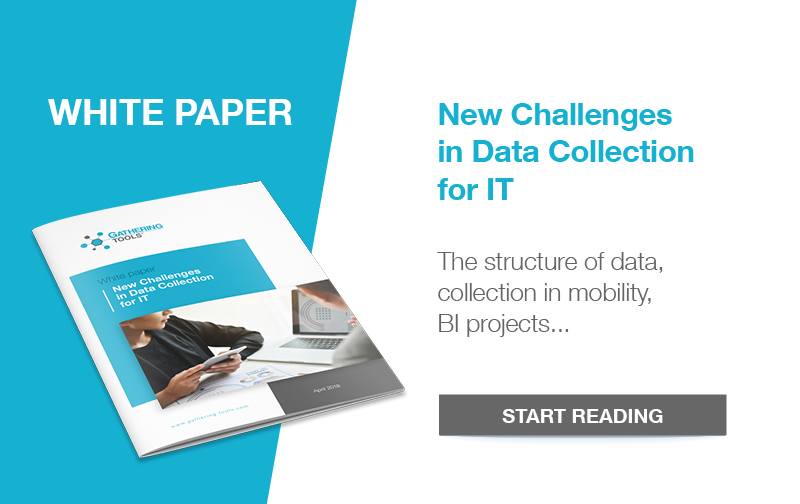The Smacs (Social, Mobility, Analytics, Cloud, Security), the main new digital technologies at the moment, bring with them many applications to something that can be considered of a utility. The new generations of employees are more than fond of these innovations, often very simple to install and use. However, we have a Problem! At the IT department, you end up with an application portfolio that is close to saturation while at the top, we tend to ask you to drastically reduce your costs. In this post, we therefore offer our analysis of the situation and some solutions to streamline your application portfolio.
Software asset management: an imperative for the IT department
 In the early 2000s, many efforts were made by information systems departments to better manage their IT infrastructure and reduce management and maintenance costs. Since 2010, the rationalisation of the application took place. Although most CIOs have already established a first step in application management by identifying large application packages and providers to support them, there is still room for maneuver.
In the early 2000s, many efforts were made by information systems departments to better manage their IT infrastructure and reduce management and maintenance costs. Since 2010, the rationalisation of the application took place. Although most CIOs have already established a first step in application management by identifying large application packages and providers to support them, there is still room for maneuver.
Of course, the general managers are aware of this phenomenon and ask the CIOs to intensify their efforts by creating internal service centers to pool expertise and application assets. In addition, recent Cyberattacks (Wannacry, Petya or Locky) also highlight the need to carefully manage its application portfolio. Indeed, who says very large number of applications also says very large number of updates to achieve, otherwise, these are all security holes that are offered to hackers.
Whether for financial or security reasons, the application management policies, through outsourcing or internally, are therefore more relevant than ever.
Software decommissioning: non-negligible benefits
 Among the solutions envisaged by the IT Departments with regard to the management of their application assets, software decommissioning is still too little used whereas it represents a deposit of considerable potential savings. It is strongly recommended to decommission obsolete applications that consume storage space, require maintenance etc. Of course, it is necessary to put in place a policy of valorisation of the data historically stored in these applications. Indeed, these data can have a lot of value for the company. Nevertheless, decommissioning does not stop with obsolete applications, quite the opposite. It is quite possible, and even recommended, to partially decommission the structuring software of the IS such as ERP, financial software, HRIS, etc.
Among the solutions envisaged by the IT Departments with regard to the management of their application assets, software decommissioning is still too little used whereas it represents a deposit of considerable potential savings. It is strongly recommended to decommission obsolete applications that consume storage space, require maintenance etc. Of course, it is necessary to put in place a policy of valorisation of the data historically stored in these applications. Indeed, these data can have a lot of value for the company. Nevertheless, decommissioning does not stop with obsolete applications, quite the opposite. It is quite possible, and even recommended, to partially decommission the structuring software of the IS such as ERP, financial software, HRIS, etc.
Take the example of a company with SAP for its central management. What good is it to buy hundreds of licenses for users who finally use only 1% of the software capacity when only a dozen would be enough? Those who are “simple” contributors can indeed use an alternative, much less expensive, to feed the ERP with ease. Same thing for other budget-consuming software such as, Decommissioning Talend, Kyriba, Sage or Oracle becomes child’s play. But then, what is this famous alternative?
GT Reasoning in your organisation
 All functions whose role is only to feed an ERP into Data do not need an ERP license for this. All you have to do is connect the Excel Business files, in which this data resides, to the ERP. And that’s exactly what Gathering Tools allows. By reproducing their Excel workbooks and all the Excel processes in place, without changing any formula, by making them secure and connecting them to the IS.
All functions whose role is only to feed an ERP into Data do not need an ERP license for this. All you have to do is connect the Excel Business files, in which this data resides, to the ERP. And that’s exactly what Gathering Tools allows. By reproducing their Excel workbooks and all the Excel processes in place, without changing any formula, by making them secure and connecting them to the IS.
And because a concrete example is better than a long speech, discover the feedback from Danone, Adidas or Geodis, who understood the value of Gathering Tools to optimize their costs.
To share with our experts how to reason Gathering Tools in your organisation, contact us!





